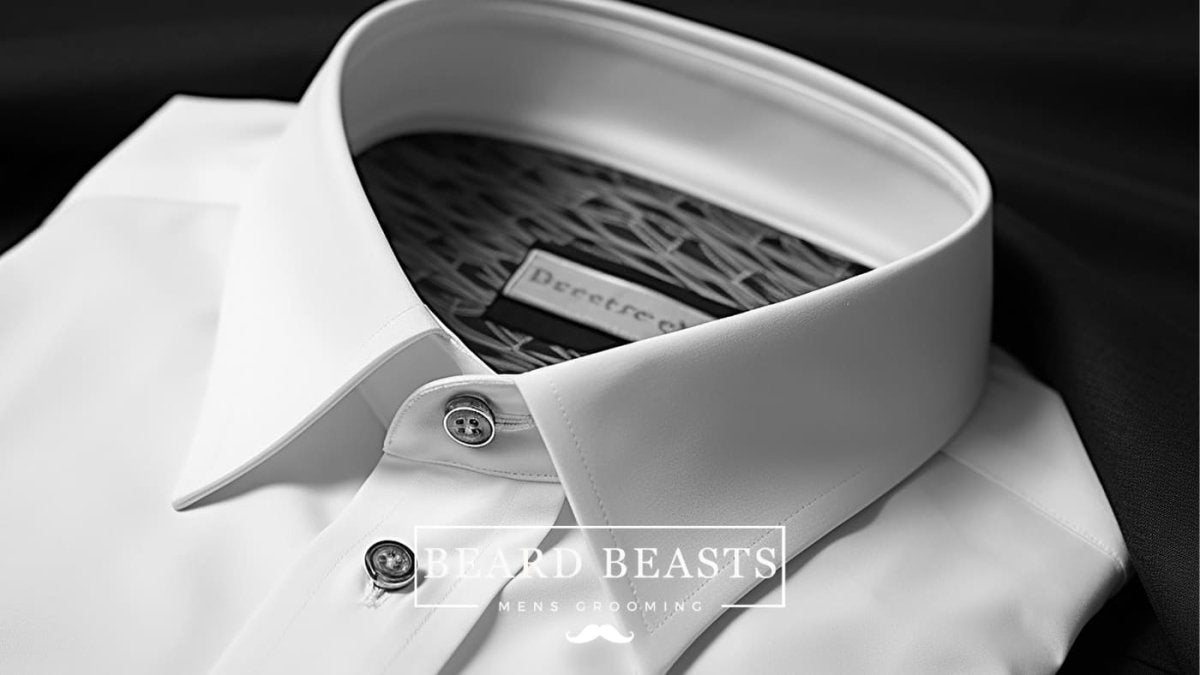How should a dress shirt fit? It’s a detail that defines presence—because even the best grooming loses impact when the shirt doesn’t sit right.
Fit is more than numbers. It’s posture, proportion, and intent. A shirt that pulls or billows throws off your frame and undermines the look you’re building.
This guide breaks down the core elements of proper fit—from collar to cuff—so you can choose dress shirts that match your grooming standards and elevate your style with precision.
First Impressions Start at the Collar
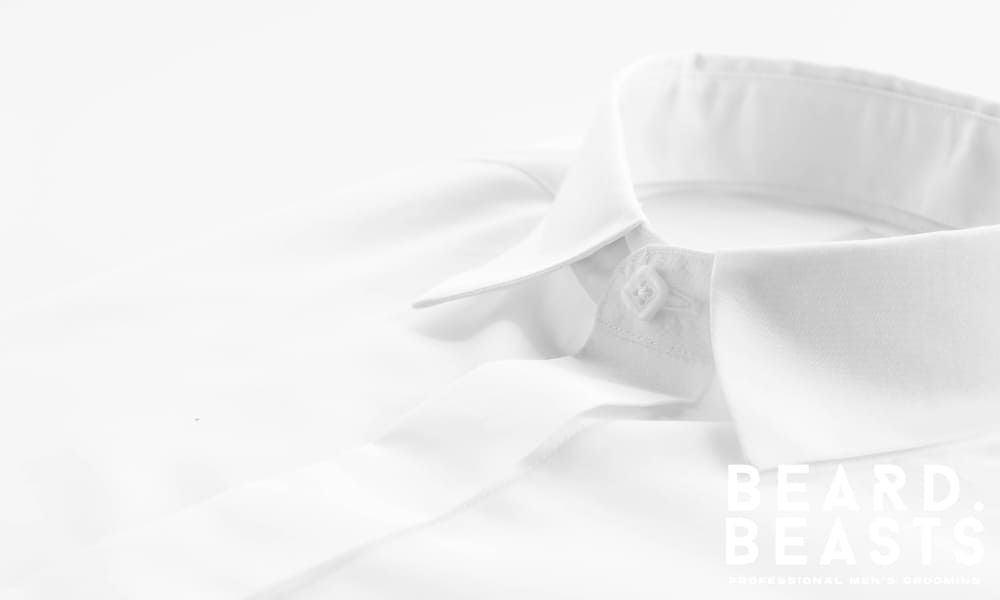
The collar is where fit begins. It defines your neckline, complements grooming, and sets the tone for everything that follows.
Why Collar Fit Matters
A collar that’s too tight looks strained and feels restrictive. Too loose, and it collapses under a jacket or tie. The right fit supports your neckline, enhances facial structure, and maintains clean definition without discomfort.
How to Measure for a Proper Collar
Use a soft measuring tape and wrap it around your neck where the collar would sit—just below your Adam’s apple. The tape should be snug but not tight. Add half an inch to that number for your shirt size.
The Two-Finger Fit Rule
Once buttoned, you should be able to slide two fingers between your neck and the collar. This ensures the collar fits neatly without constriction and holds its shape throughout the day.
Consideration for Grooming
Bearded or clean-shaven, your collar should never compete with your neckline. A well-proportioned collar rests neatly beneath the jaw and provides contrast without crowding—especially important with fuller beard styles.
Shoulders: Where Precision Defines Presence
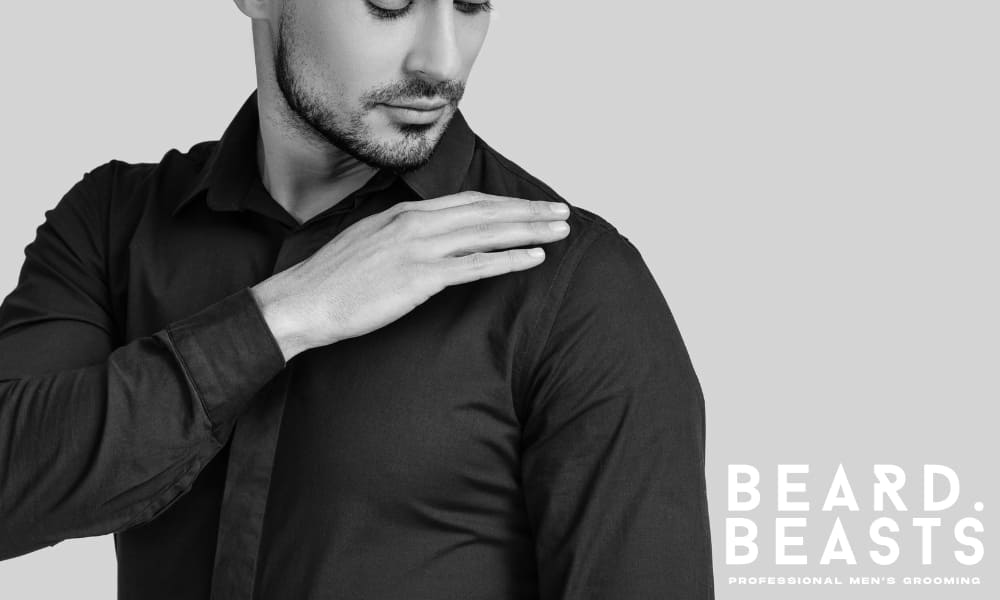
The shoulder seam is one of the most critical points of dress shirt fit. It determines how the shirt hangs, how it moves, and whether your appearance reads as sharp or careless.
Seam Placement Defines Structure
The seam should sit exactly where your shoulder ends and your upper arm begins. This alignment allows the shirt to drape naturally down the chest and arms without tension or sagging.
The Consequences of Poor Fit
If the seam sits too far in, the shirt pulls across the upper back and restricts movement. If it drops too far out, the fabric collapses, creating a boxy, oversized silhouette. Both distort your proportions and break the visual line of your outfit.
Why It Matters for Grooming
Strong shoulder structure complements the lines of a well-groomed beard or defined jaw. It helps maintain visual balance, especially for broader beards or high-contrast facial styles. Precision here signals attention to detail—and that never goes unnoticed.
Sleeves and Cuffs: Detail That Speaks Quiet Authority

Sleeves and cuffs might seem secondary, but their precision often makes or breaks the look.
Sleeve Length: The Subtle Standard
Sleeves should end just at the base of your thumb when your arms are at your sides. This ensures about half an inch of shirt cuff remains visible beneath a suit jacket—clean, intentional, and correct.
Cuff Fit: Controlled, Not Constricting
A well-fitted cuff sits close to the wrist without squeezing. You should be able to fit one to two fingers between your wrist and the buttoned cuff. This allows for comfort, movement, and, if needed, space for a watch.
Why It Matters for Presentation
Excess length or loose cuffs make your arms appear shorter and disrupt the line of your silhouette. In contrast, sharp cuff placement complements wrist accessories, emphasizes tapering, and subtly reinforces a polished appearance.
Chest and Torso: Clean Lines Over Clingy Fits
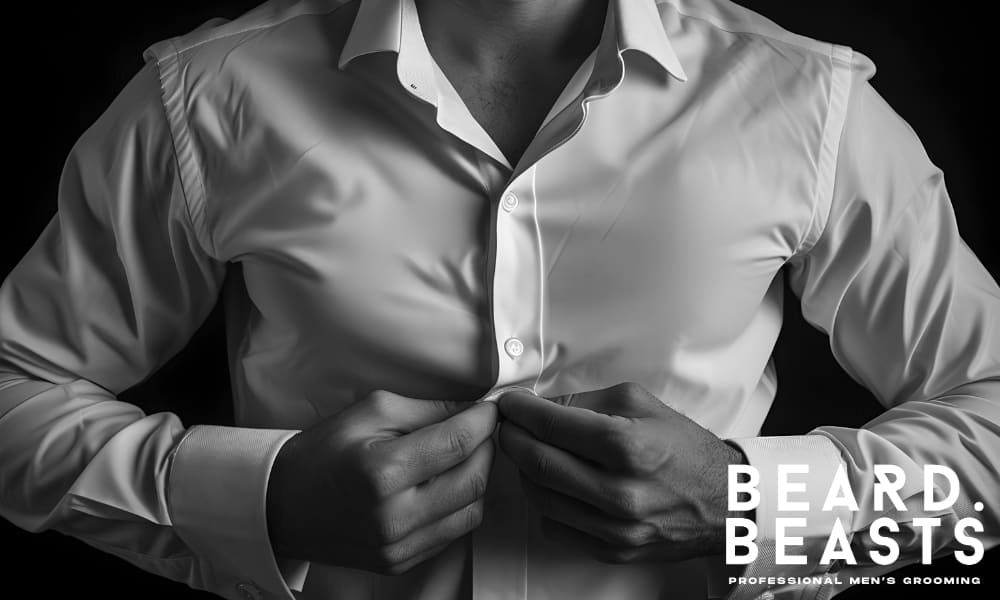
A well-fitted dress shirt follows the shape of your torso without clinging or billowing. This is where tailoring meets clarity—your shirt should frame your build, not fight it.
The Fit Across the Chest
The shirt should lie flat across your chest without pulling at the buttons or gaping at the placket. There should be enough room to move freely, but not so much that the fabric balloons with every shift.
The Taper Through the Waist
A clean taper through the midsection creates definition and control. For athletic builds, a tailored or slim fit often works best. For broader frames, a regular cut with minimal excess fabric will keep the shape clean.
Beard Balance and Body Line
A full beard adds volume near the jaw and neckline—your shirt should balance that by keeping the torso streamlined. When the chest and waist are shaped correctly, it creates a natural V that enhances posture and sharpens your profile.
Shirt Length: Tuck Once, Stay Sharp All Day

Length is often overlooked—but it’s one of the most practical and visual indicators of a well-fitted shirt. If it won’t stay tucked, it doesn’t fit.
Ideal Length for Tucking
The shirt should extend past your waistband, reaching the mid-to-lower seat. This length ensures stability when tucked and prevents constant readjustment throughout the day.
The Consequences of Poor Length
Too short, and the shirt pulls out every time you move. Too long, and it bunches around the waist, interrupting clean lines and adding bulk beneath your jacket or sweater.
Style and Movement
A properly proportioned shirt allows for full motion without sacrificing shape. When it stays tucked without effort, your grooming and posture remain uninterrupted—and your look stays composed.
Back Pleats: Mobility Without Compromising Structure
Pleats aren’t decorative—they’re functional. The type you choose influences how your shirt responds to movement.
Box Pleats for Ease and Range
A single box pleat, centered between the shoulder blades, adds extra room across the back. It’s a classic choice that prioritizes mobility, especially for broader frames or active wearers.
Side Pleats for Subtle Shape
Located just behind the shoulders, side pleats offer a slimmer silhouette while still allowing movement. They maintain a cleaner line and are ideal for tailored or modern cuts.
No Pleats for a Clean, Close Fit
Shirts without pleats follow the spine more closely, creating a sharp, minimalist look. Best suited for slim builds and those who prefer a structured, contemporary profile.
Movement Without Sacrificing Shape
The right pleat—or lack thereof—prevents pulling through movement, keeping your fit intact and your posture uninterrupted.
Fabric Matters: How Material Affects Fit and Feel
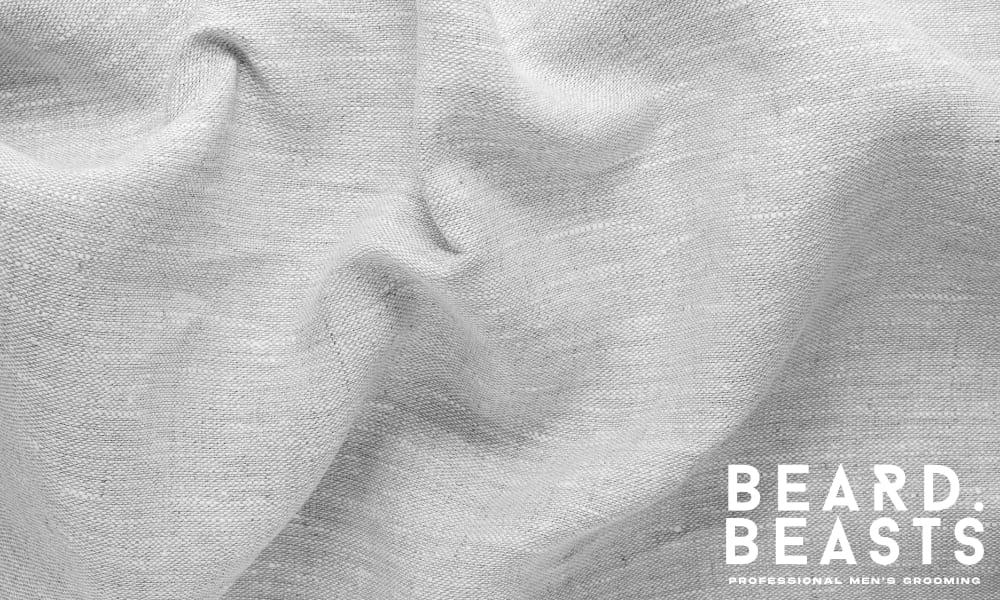
Not all shirts are created equal—and fabric is the first place that difference shows.
Cotton: The Standard for Structure and Comfort
High-quality cotton offers durability, breathability, and crispness. Look for long-staple varieties like Egyptian or Pima cotton for a smooth finish that maintains shape wash after wash. Learn more about Egyptian cotton and why it’s prized in premium shirting.
Stretch Blends: Comfort with Control
Cotton blends with a small percentage of elastane or spandex provide subtle stretch. These fabrics accommodate movement while maintaining a defined silhouette—ideal for active days or closer fits.
Linen and Lightweight Weaves
Linen offers exceptional breathability in warm weather but comes with a more relaxed drape and visible texture. It’s better suited for casual environments where a looser fit is acceptable.
Fabric Choice Influences Fit Perception
Stiff weaves create a sharper profile but may restrict movement. Softer fabrics adapt more easily to your build but can lose structure. Choosing the right material is as critical as the cut—it directly affects how your shirt fits, feels, and presents your grooming.
Common Fit Mistakes Men Still Make
Even a quality shirt can fall short without proper fit. These are the mistakes that quietly undo sharp style—and how to correct them.
Chest Gaping
When buttons pull apart across the chest, the shirt is too tight. Either size up or choose a different cut that accommodates your frame without tension.
Sleeve Imbalance
Sleeves that fall past the thumb or sit above the wrist disrupt proportion. Always check sleeve length standing naturally, with arms relaxed—adjustments here make a visible difference.
Collar Discomfort or Collapse
A collar that chokes or slouches ruins posture and detracts from facial grooming. Use proper measurements and the two-finger rule to ensure a firm but comfortable fit.
Excess Fabric Around the Waist
Billowing at the midsection adds unnecessary bulk. If the shoulders and chest fit well, tailoring the waist is a simple fix that dramatically improves form.
Relying on Size Alone
Labels like “slim” or “classic” vary by brand. Always try on or measure—fit comes from cut, not just size. When in doubt, tailor for precision.
Final Thoughts: Fit Sharpens Everything
How should a dress shirt fit? The answer lies in precision. From the collar that defines your neckline to the hem that stays tucked all day, every element contributes to a look that’s intentional, elevated, and complete.
Proper fit doesn’t demand attention—it earns it. It enhances grooming, reinforces posture, and signals control without a single word. And while fabric, cut, and construction matter, it’s your eye for detail that sets you apart.
Whether you’re building a capsule wardrobe or upgrading your daily essentials, treat fit as non-negotiable. It’s not just style—it’s standards. And every well-groomed man should know the difference.

